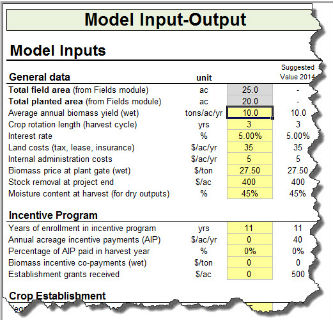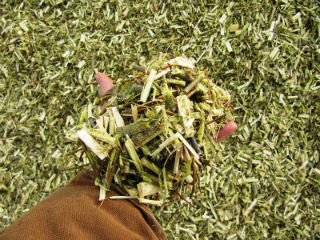
Table of Contents
- Introduction
- Research Purpose
- Research Activities
- What We Have Learned
- Why This Is Important
- For More Information
- Contributors to This Summary
Introduction
An important consideration for commercial shrub willow crop …

An important consideration for commercial shrub willow crop …

EcoWillow is a financial analysis tool developed by SUNY-ESF that allows users to model the costs and revenues of willow biomass production through every stage of the feedstock life cycle from site preparation through planting, harvesting, and transport to an end user for renewable energy

Harvest method impacts wood chip quality–use a single-pass cut-and-chip method and willow makes the grade.

Biomass for bioenergy and/or bioproducts can be sourced from forests, agricultural crops, various residue streams,
Research finds triploid hybrids of shrub willow yield the highest biomass, leading to improved cultivars for renewable energy.

Research into the genetics and biomass composition of shrub willow shows that triploid hybrids generally outperform diploid and tetraploid hybrids. This …

Farmers growing shrub willow for bioenergy are helped by a BCAP project in New York State that aims to make the biomass crop more financially viable.

Woody biomass throughput is tripled using a new single-pass cut-and-chip harvesting system. Operator experience, crop characteristics, ground conditions, and speed all affect throughput.
Many types of specialized machinery for harvesting short rotation woody crops …
If you are looking for a comprehensive article on poplar for biofuel production, this is for you.

Poplars (Populus spp.) are popular trees …

Grown for biofuel, energy-efficient shrub willow sequesters carbon below-ground, life-cycle assessment shows.
Shrub willow is a short-rotation woody biomass crop that could be an important part of our renewable energy future. By sequestering carbon in below-ground biomass, it can …
by Oladiran Fasin
As part of preparing biomass for conversion into biofuels, biomass is ground through mills such as a hammer mill (Figure 1) or a knife mill. The ground biomass particles are then fed into conversion vessels and/or stored in hoppers that are often attached to storage vessels (Figure 2). Creating a steady flow of the biomass particles out of the hopper is a significant issue for processing and conversion. Often, biomass flow from storage containers will be disrupted …
These terms refer to three generally different end uses of biomass based products. “Biofuel” is short for “biomass fuel,” a term used for liquid fuels produced from biomass (generally transportation fuels), such as ethanol, bio-oil, and biodiesel. “Biopower” refers to biomass-fueled power systems that generate electricity or industrial process heat and steam, such as combined heat and power (CHP) systems. “Bioproduct” is short for “biomass products” and can be used to describe a chemical, material, or other (non-energy) product such …